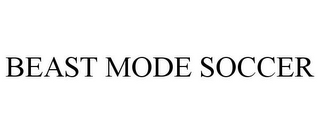Cathedral Art Metal Co, Inc. sued Nicole Brayden Gifts, LLC for trademark infringement arising from Brayden’s use of the term “Amazing Woman.” The Complaint alleges Brayden’s use of the term on a plate shown below is infringing.

Before getting to Brayden’s plate, let’s count the ways that Cathedral’s use of “Amazing Woman” on this plate (left) is not a trademark use.
First, “Amazing Woman” is not provided in a different font type, font size, color, or otherwise distinguished from the surrounding text. Second, it is used descriptively in the phrase “Recipe For An Amazing Woman.” Third, the poem that follows the heading purports to be exactly as the title directs, a “Recipe For An Amazing Woman.” Here’s what the poem on the plate says:
Start with faith and honesty
Mix in pure humility
Add strength of character that rises above the stress of life’s surprises
Fold in personality
Toss with generosity
Pour in love from a heart that’s true
Yield: one terrific, and amazing YOU!
Ask yourself, does “amazing woman” on this plate standout as a trademark? No. AÂ reasonable consumer encountering that plate would not think that “amazing woman” is used to indicate a source of goods. Everything on that plate signals that “amazing woman” is used descriptively to describe how to purportedly “yield” an amazing woman.
The threshold issue for asserting trademark infringement is that the plaintiff has trademark rights. How do you obtain trademark rights? By using the mark as a trademark (or filing an intent to use trademark application and then using the mark as a trademark).
Maybe Cathedral uses Amazing Woman elsewhere in a trademark manner, such as in its catalog, but it does not on this plate.
Ironically, Brayden’s plate provides Amazing Woman in an enlarged and different font from the surrounding text, which is more indicative of a trademark use. But other factors point to a descriptive use such “Recipe for an Amazing Woman” and the poem purports to “yield” an amazing woman:
Start with a strong Woman; not the ordinary kind.
Add in love, compassion caring and consideration combined.
Sprinkle in generosity and kindness and friendship that’s pure and true.
Mix together with a blessing to yield one amazing woman. You!
Cathedral also claims trade dress infringement. The complaint describes the trade dress as including “a stylized presentation of the mark AMAZING WOMAN disclosed against a background of soothing distinctive colors, initially featuring a soft green-and-blue color scheme.” But the plates do not look that similar even setting aside the issue of whether Cathedral has acquired distinctiveness in the alleged trade dress.
Here are some more allegedly infringing products:

Each one of those uses of “Amazing Woman” begins with “You are an” or “Recipe for an” indicating a descriptive use of the words.
Cathedral moved for a temporary restraining order, which, unsurprisingly, was denied. Cathedral has a uphill fight here.
If you want to develop trademark rights in a mark, do not use your mark descriptively. Further, present your trademark in a manner that makes it look like a trademark, e.g. in some way that is distinguished from the surrounding text.
Citation:Â Cathedral Art Metal Co., Inc. v. Divinity Boutique, LLC, No. 1-18-cv-00141 (N.D.GA 2018).







 Frederic Towers began using the term “The Professional Portfolio System” in November 1982 for a computer-based portfolio valuation system.
Frederic Towers began using the term “The Professional Portfolio System” in November 1982 for a computer-based portfolio valuation system.